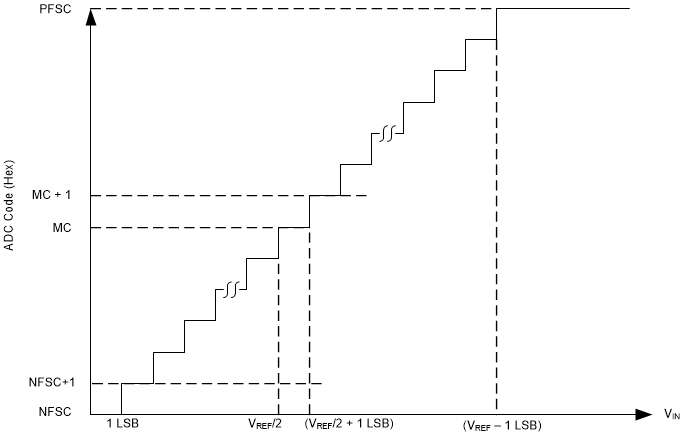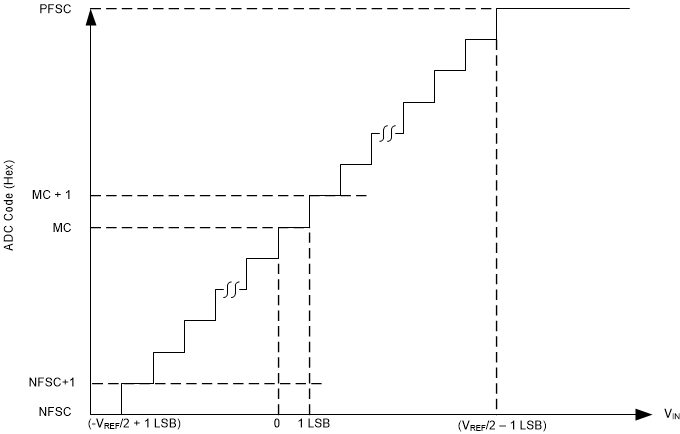SBAS891B November 2017 – September 2022 ADS7142-Q1
PRODUCTION DATA
- 1 Features
- 2 Applications
- 3 Description
- 4 Revision History
- 5 Pin Configuration and Functions
-
6 Specifications
- 6.1 Absolute Maximum Ratings
- 6.2 ESD Ratings
- 6.3 Recommended Operating Conditions
- 6.4 Thermal Information
- 6.5 Electrical Characteristics: All Modes
- 6.6 Electrical Characteristics: Manual Mode
- 6.7 Electrical Characteristics: Autonomous Modes
- 6.8 Electrical Characteristics: High Precision Mode
- 6.9 Timing Requirements
- 6.10 Switching Characteristics
- 6.11 Timing Diagrams
- 6.12 Typical Characteristics: All Modes
- 6.13 Typical Characteristics: Manual Mode
- 6.14 Typical Characteristics: Autonomous Modes
- 6.15 Typical Characteristics: High-Precision Mode
-
7 Detailed Description
- 7.1 Overview
- 7.2 Functional Block Diagram
- 7.3 Feature Description
- 7.4 Device Functional Modes
- 7.5 Programming
- 7.6 Register Map
- 8 Application and Implementation
- 9 Device and Documentation Support
- 10Mechanical, Packaging, and Orderable Information
Package Options
Mechanical Data (Package|Pins)
- DQC|10
Thermal pad, mechanical data (Package|Pins)
- DQC|10
Orderable Information
7.3.4 ADC Transfer Function
The ADC provides data in straight binary format. The ADC resolution can be computed by Equation 1:
Equation 1. 1 LSB =
VREF / 2N
where:
- VREF = AVDD
- N = 12 for autonomous monitoring modes and manual mode
Figure 7-5 and Figure 7-6 show the ideal transfer characteristics for single-ended input and pseudo-differential input, respectively. Table 7-1 lists the digital output codes for the transfer functions.
 Figure 7-5 Ideal Transfer Characteristics for
Single-Ended Configurations
Figure 7-5 Ideal Transfer Characteristics for
Single-Ended Configurations Figure 7-6 Ideal Transfer Characteristics for
Pseudo-Differential Configuration
Figure 7-6 Ideal Transfer Characteristics for
Pseudo-Differential ConfigurationTable 7-1 Transfer
Characteristics
| INPUT VOLTAGE FOR SINGLE-ENDED INPUT | INPUT VOLTAGE FOR PSEUDO DIFFERENTIAL INPUT | CODE | DESCRIPTION | IDEAL OUTPUT CODE |
|---|---|---|---|---|
| ≤1 LSB | ≤ (–VREF / 2 + 1) LSB | NFSC | Negative full-scale code | 000 |
| 1 LSB to 2 LSBs | (–VREF / 2 + 1) to (–VREF / 2 + 2) LSB | NFSC + 1 | — | 001 |
| (VREF / 2) to (VREF / 2) + 1 LSB | 0 LSB to 1 LSB | MC | Mid code | 800 |
| (VREF / 2) + 1 LSB to (VREF / 2) + 2 LSBs | 1 LSB to 2 LSB | MC + 1 | — | 801 |
| ≥ VREF – 1 LSB | ≥ VREF / 2 – 1 LSB | PFSC | Positive full-scale code | FFF |